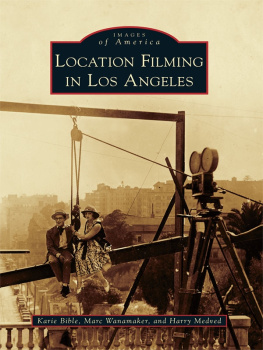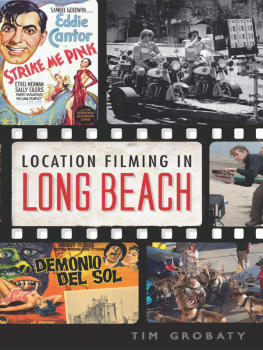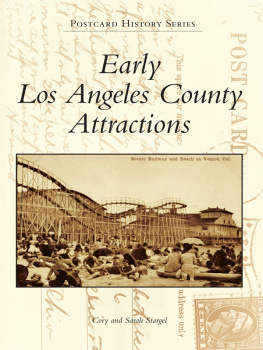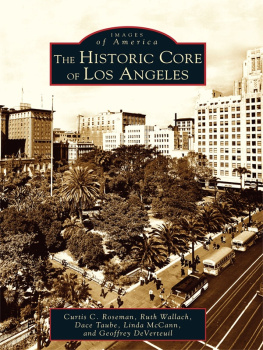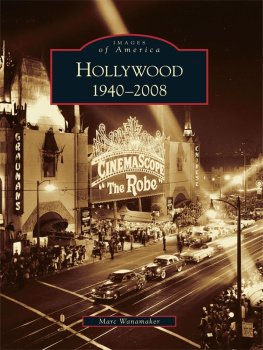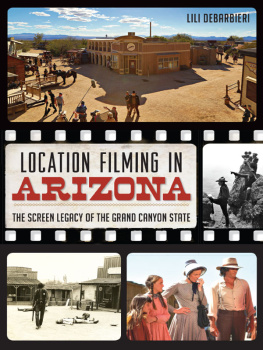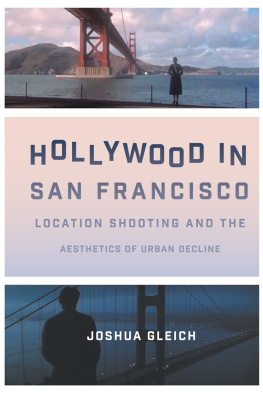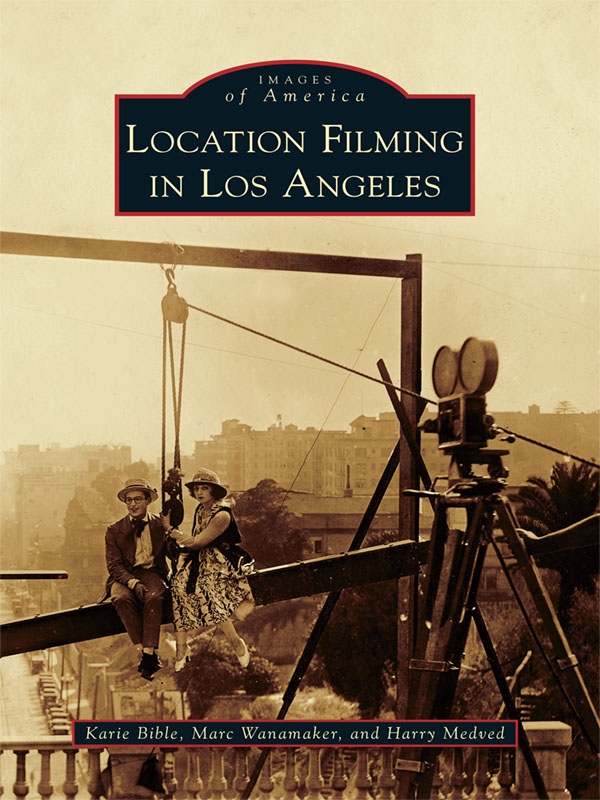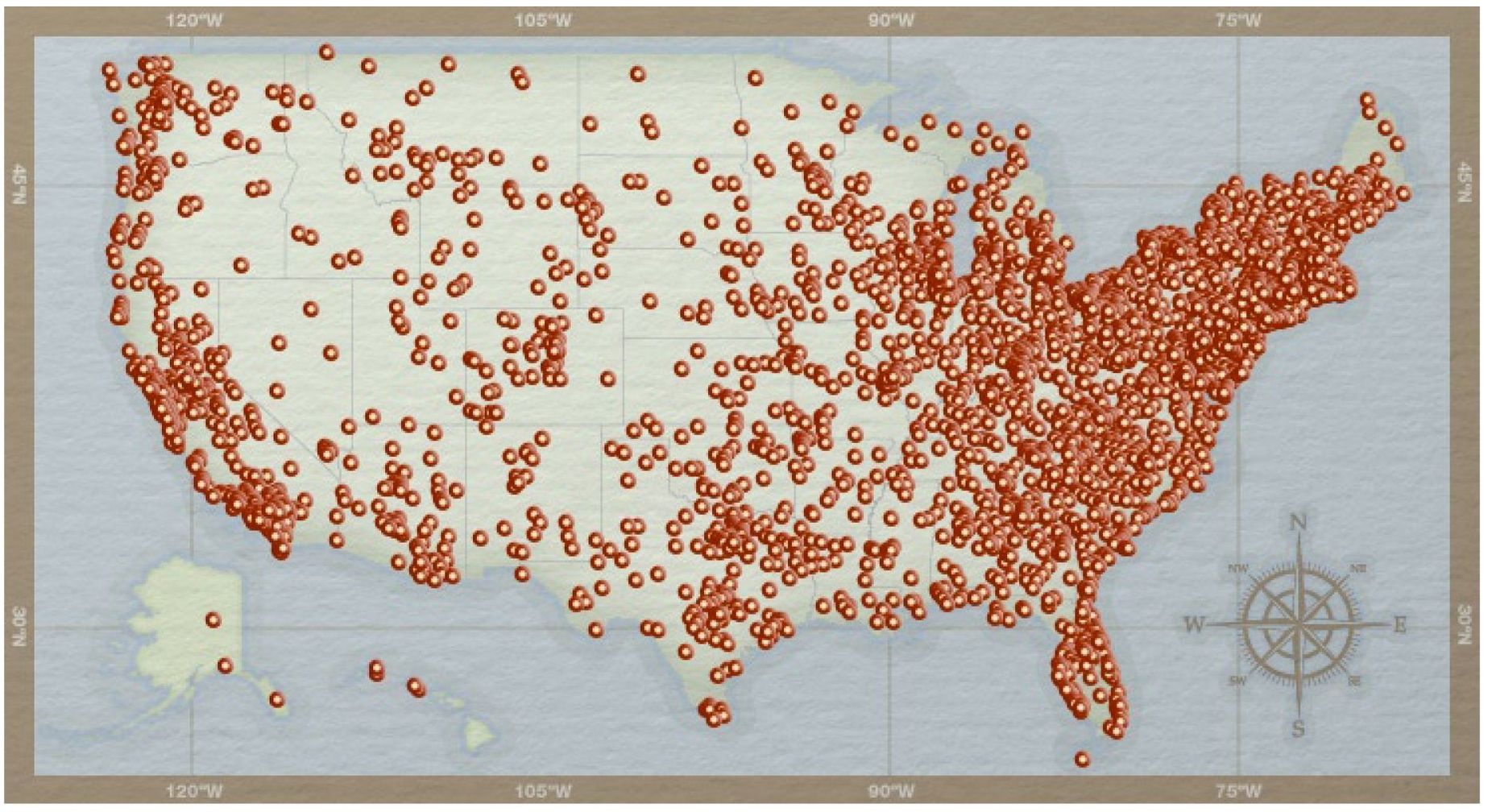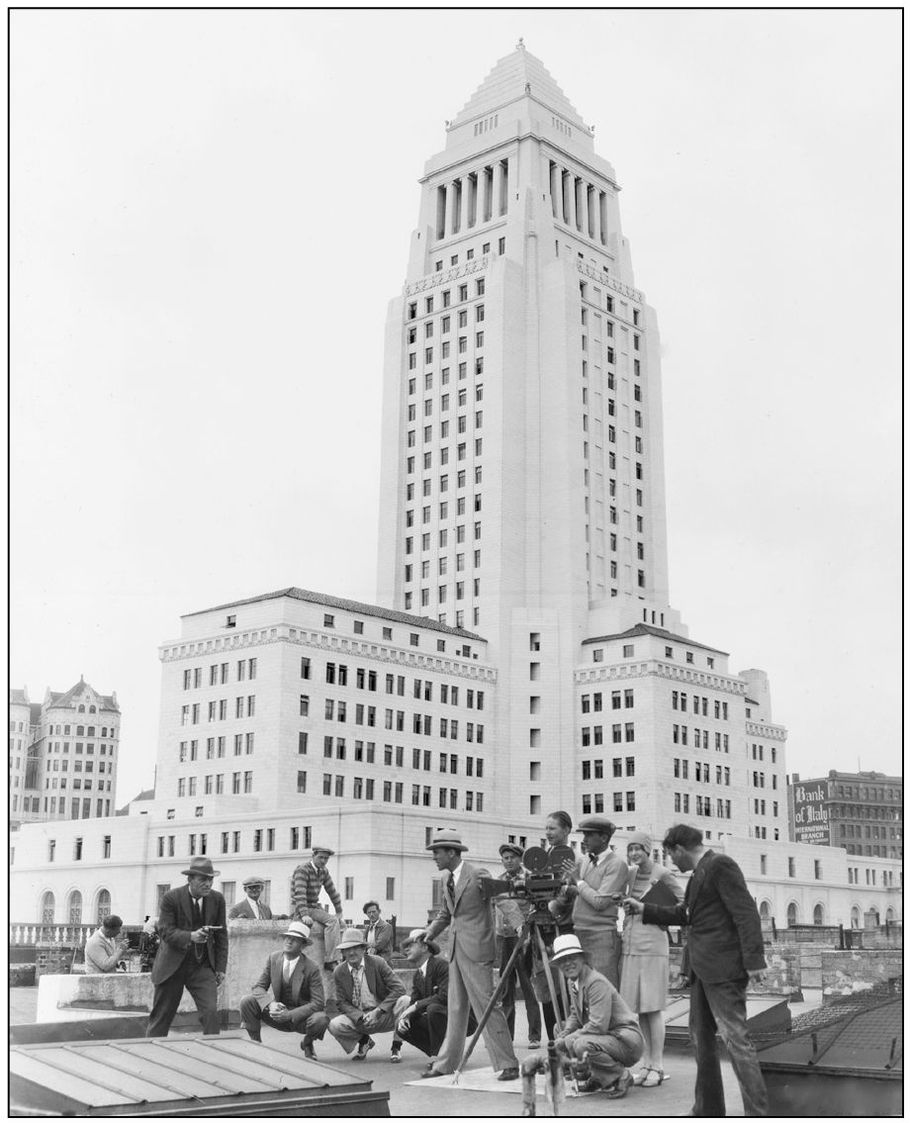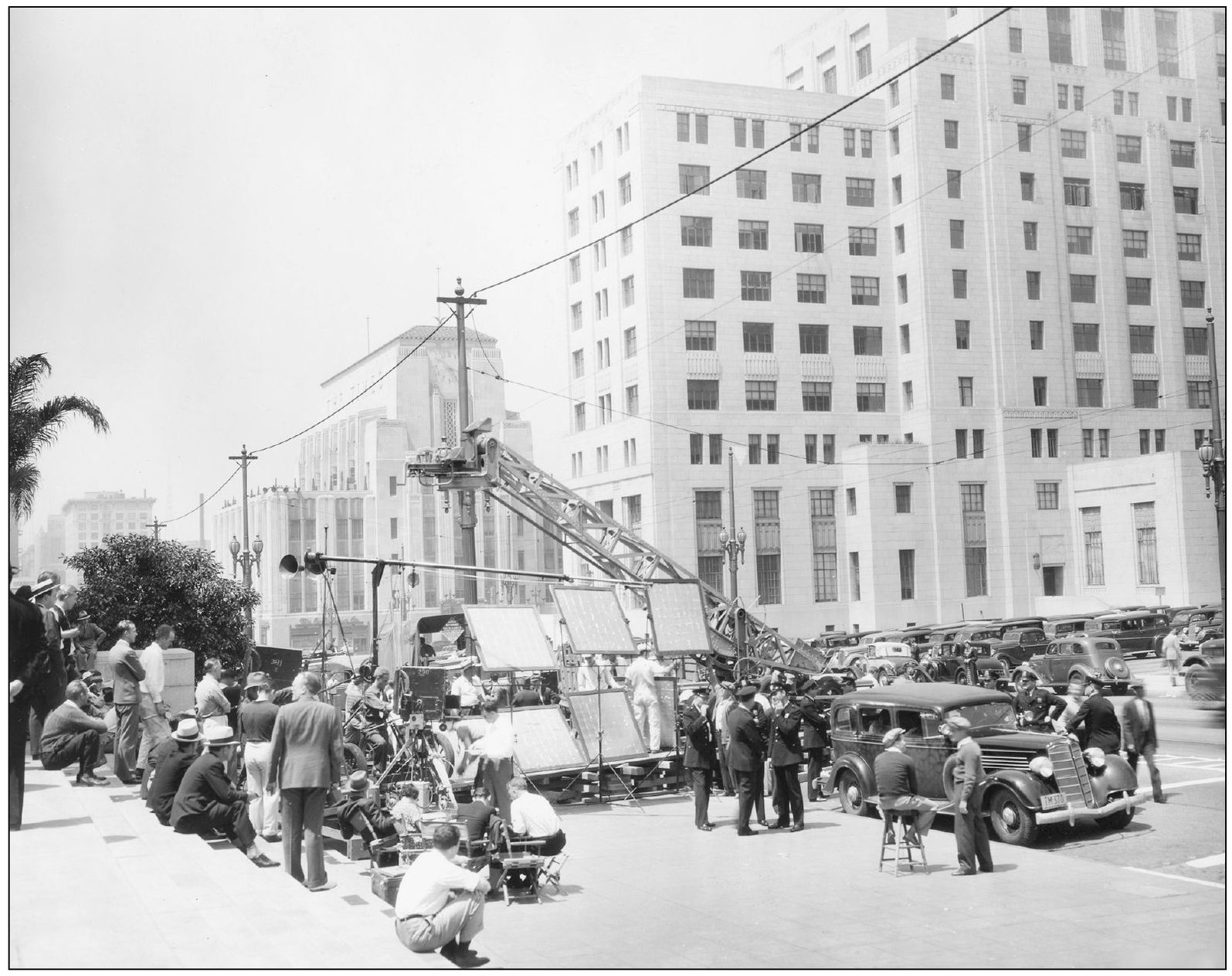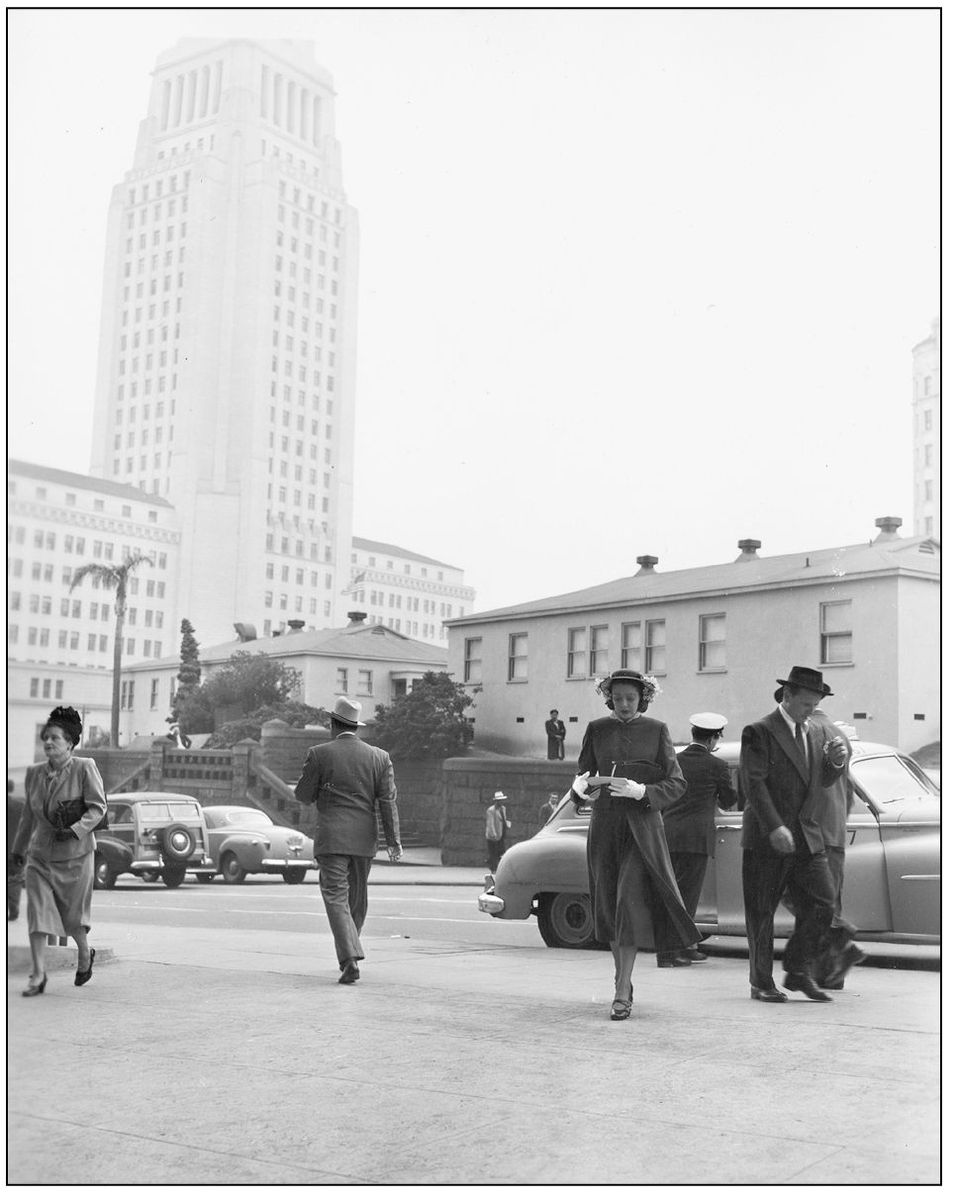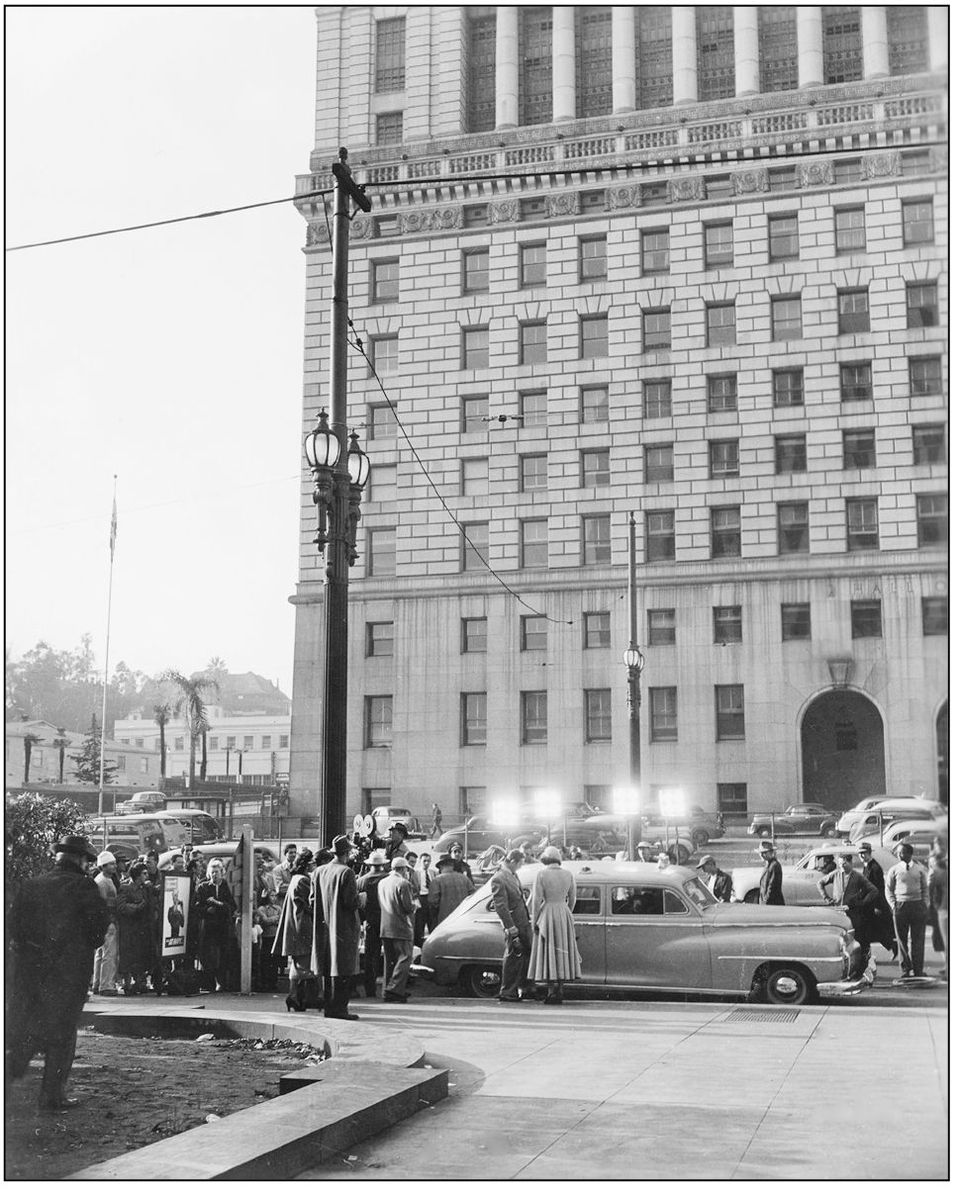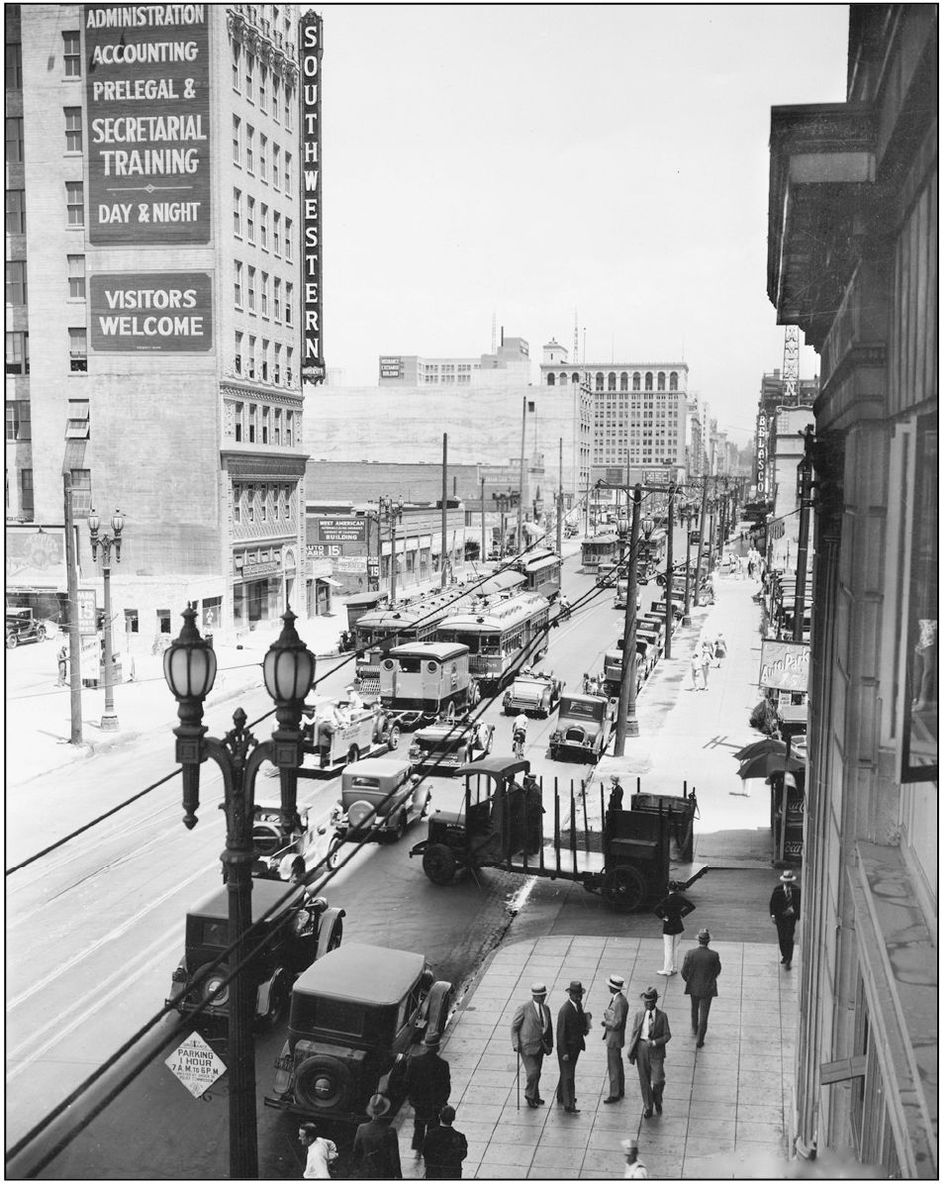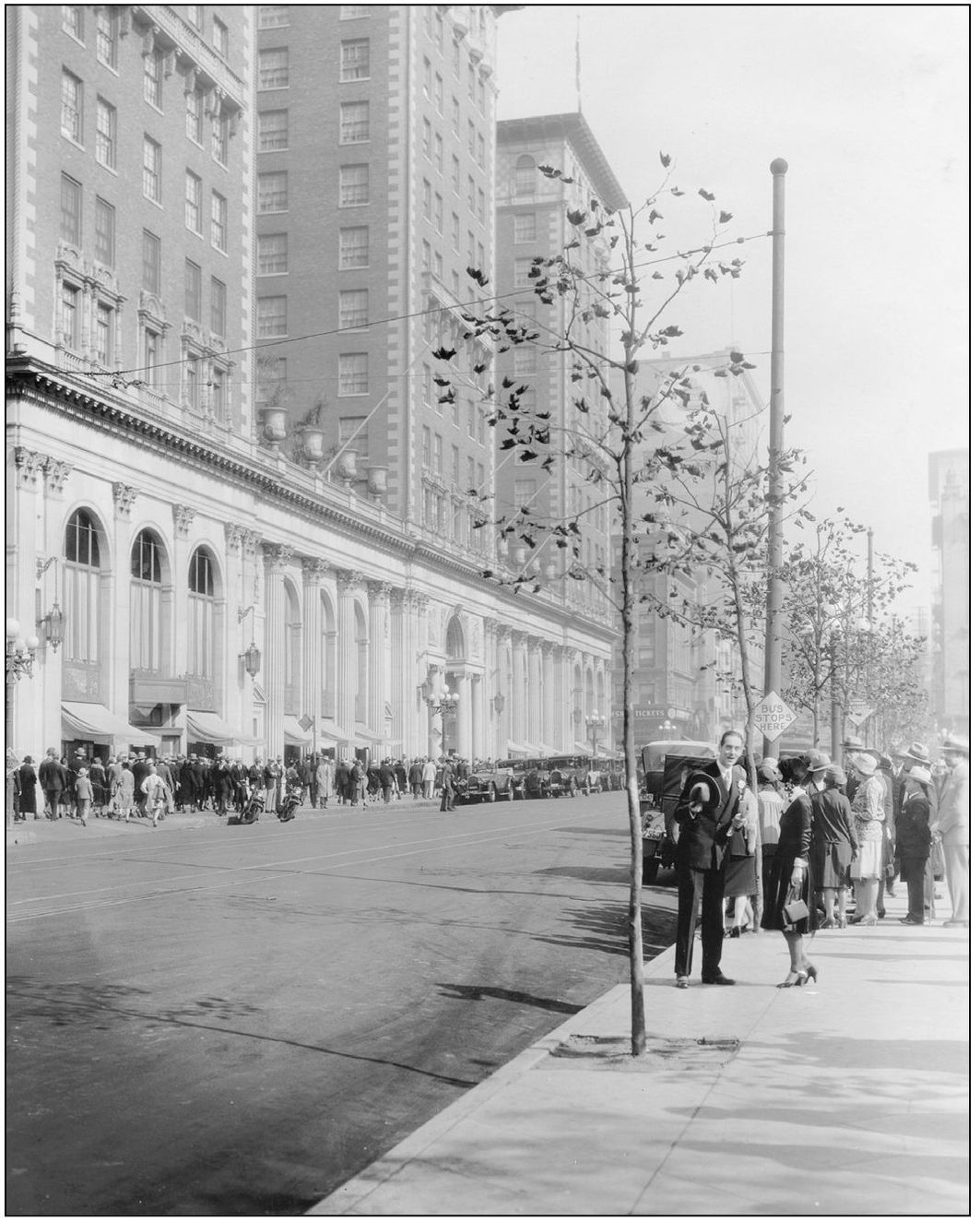One
DOWNTOWN THE BIRTH OF AN INDUSTRY
The forgotten suburb of Edendale, north of downtown Los Angeles, was where producer William N. Selig and director Francis Boggs opened the first permanent film studio in Los Angeles, the Selig Polyscope Company, in 1909. During the 1910s, many film studios opened in Edendale, erecting structures on Allesandro Street (later renamed Glendale Boulevard).
Edendale welcomed the Keystone Film Company, headed by Mack Sennett in 1912. Between 1913 and 1917, numerous comedy stars worked for Keystone, including Mabel Normand, Charlie Chaplin, Fatty Arbuckle, the Keystone Kops, and Harold Lloyd. Sennett comedies were typically improvised and featured chase scenes filmed in surrounding neighborhoods.
Echo Park Lake, located a mile away from the Edendale studio, was a favorite location for Sennetts unique brand of slapstick comedy. In 1913, when Sennett heard that Echo Park Lake was going to be drained, he mounted a film around it, A Muddy Romance .
By the time moviemakers came to downtown Los Angeles, the Wall Street of the West had skyscrapers and a bustling street life. With the construction of lavish hotels such as the Biltmore and movie palaces such as the Orpheum, downtown Los Angeles became the movie industrys first stop. Moviemakers made deals on the Million Dollar Rug in the lobby of the Alexandria Hotel. Outside, dangerous stunts and thrill scenes were staged by adventurous directors. These pictures offered birds-eye views of the buildings and streets below.
With its many movie palaces, downtown was the preferred setting for movie premieres until the early 1930s. After World War II, the downtown area started to decline. Scenes filmed there showed poverty, crime, and decay. Bunker Hill, once a neighborhood of regal Victorian homes, fell into disrepair and was demolished by the 1960s.
Many downtown landmarks languished until the late 1990s when civic boosters pushed the area toward a comeback. More than 100 years later, downtown is still a prime filming location representing Big City, U.S.A.
L OS A NGELES C ITY H ALL , 1928 . Lon Chaney films a scene in front of the newly constructed city hall for the silent detective drama While The City Sleeps (MGM). The production made great use of downtown rooftops to create the illusion of New York City.
CITY HALL ENVIRONS, 1936 . The cast and crew from Straight from the Shoulder (Paramount) shoot a scene near First and Spring Streets. In the rear-left background is the new Los Angeles Times Building, dedicated in 1934.
C ITY H ALL E NVIRONS, 1949 . Loretta Young films The Accused (Paramount) at the Los Angeles Civic Center with city hall in the background. City hall has been featured in numerous crime dramas, including Cry Danger, L.A. Confidential, and D.O.A., as well as the opening credits of televisions Dragnet and The Adventures of Superman.
H ALL OF J USTICE, 1949 . The crew for Illegal Entry (Universal) sets up a shot in front of the 1926 Hall of Justice building on Temple Street, near city hall. Marta Toren and Howard Duff stand at the curb waiting to film their scenes. The Hall of Justice was also used as a filming background for the television shows Dragnet and Get Smart .
H ALL OF J USTICE ENVIRONS, 1949 . The cast and crew of Criss Cross (Universal) prepare to film a scene atop the north end of the Hill Street Tunnel, with the Hall of Justice in the background. The film starred Burt Lancaster, Yvonne De Carlo, and Dan Duryea and is widely considered a classic in the film noir genre. The film company shot extensively on Los Angeles streets, many of which no longer exist. The tunnel and hill were later razed to make way for the Civic Center Mall.
H ILL S TREET, 1939 . An unidentified Paramount movie films in the streets of downtown Los Angeles. Note the streetcars and sound recording truck and camera car in the center of the street. The vertical blade signs for the Belasco and Mayan Theaters may be glimpsed at the far right.

